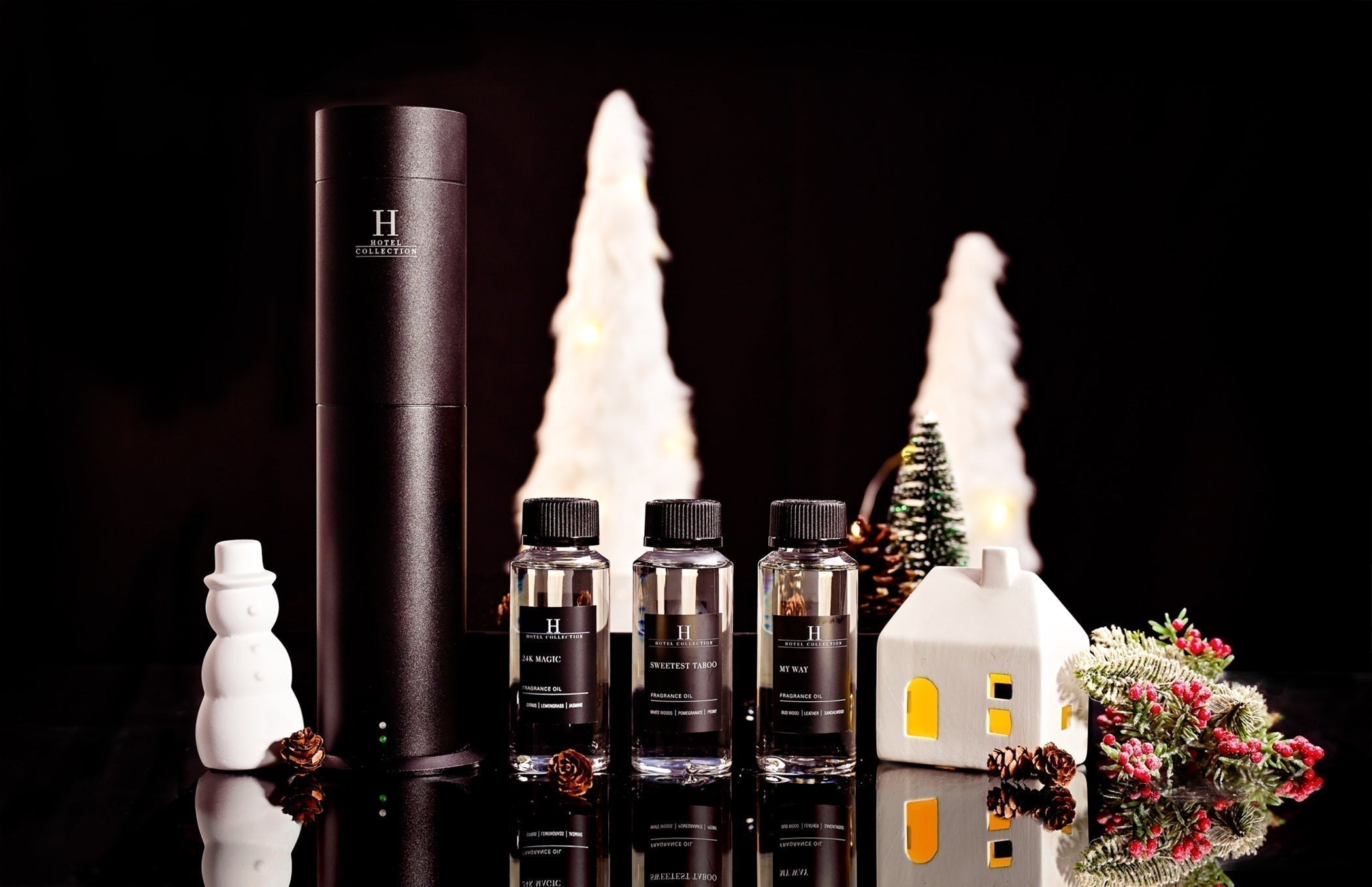The Elements of Winemaking
Discover the 130-year-old Spanish legacy with our selection of four wines: Chardonnay 10, Red Blend 19, Reserva 56, and Rosé 29.

About Our Vineyard
Born out of a passion for cultivating the finest Spanish wines, Hotel Collection wine is produced at one of the area’s oldest vineyards, stretching for nearly 4 acres throughout the appellations of Rioja and Navarra in North Central Spain. This region is known for its wine craftsmanship as it is a viticultural tradition in the area.
Each valley across the vineyard have its own unique features. The vineyards are distributed throughout different municipalities, which allows for the exploitation of different soils and grape varieties.
To preserve the aromas and keep the grapes in perfect condition, they are harvested on dewy early mornings through the months of September and October. The proximity of the vineyards to the winery guarantees optimal ripening and freshness.
Grape Varieties

Since vines depend on sunshine for the development of key compounds during the ripening process, the degree of ripeness is often the main variable controlling flavor and style, more so than grape variety.
Grapes are harvested based on their sugar content and alcohol content, as sugars are converted by yeast into alcohol by the process of fermentation. A low level of ripeness makes it difficult to taste the differences between wines. In turn, the lower the wine's alcohol content, the more mild and neutral the flavor.
As this ripening process proceeds, sugars accumulate in the berries and the acidity levels drop. This process changes the tannins (substances found in plants that creates a drying, rubbing sensation on your tongue). This allows the wine to become less bitter-tasting and softer, making the grapes taste less green.
High acidity levels are essential for long-term wine aging. A wine with high acid will taste crisper and more tart on the palate, while a low-acid wine will feel smoother and rounder.
Chardonnay 10: 5.0g acidity, 3.5g sugar content,12.5% ABV
Red Blend 19: 5.7g acidity, 3.5g sugar content,14% ABV
Reserva 56: 5.5g acidity, 1.5g sugar content, 14% ABV
Rosé 29: 5.2g acidity, 3.5g sugar content, 13% ABV
Soil Composition

- Sand: Drains well and retains heat. High aromatics, lighter acidity, pale color, and lower tannin level.
- Limestone-Clay: Retains water and stays cooler. High extract and bold color.
- Silt: Retains water and heat. Very fine grain makes growing roots difficult. High aromatics, slightly lighter color, and smooth tannin levels.
- Loam: Too fertile unless blended. This equal mix of silt, clay, and sand is too organic for wine growing causing vineyards to be over-vigorous. Wines in this soil have little flavor and color.
- Gravel/Pebbles/Slate Add-ins: Adding gravel/pebbles to soil increases water drainage while adding slate helps to retain heat.
Having vineyards stretch across different hills allows for terroir nuances in each bottle. This technique creates a longer harvest season, giving time for optimal ripening of each variety of grape.
Poor, stony soil is often preferred. Very good drainage forces grape vines to root deeply, looking in the subsoil for those nutrients and water that it needs. The limited presence of water and nutrients in these soils forces the grapes to go into the ripening phase earlier. As a result, the aromas mature faster, the grapes get higher sugar levels and the acidity drops earlier.
Red Blend 19: Sand, loam, limestone, clay, gravel blend
Reserva 56: Calcareous clay
Rosé 29: Sand, limestone marl, pebbles
Elevation

Altitude impacts the growth and flavor of every wine harvest, due to a variety of elements like sea level, water runoff, sunlight level, humidity, and climate. A high elevation vineyard is considered anything over 1,200 feet. Mountain and hillside vineyards receive more direct and concentrated sunlight, dramatic temperature shifts, and drainage.
- These factors make it difficult for vines to grow, in turn forcing them to go into survival mode and produce smaller yields. This allows for the grapes to grow smaller and tighter, thus condensing flavor.
- Mountains see more rainfall. The elevation of the slopes causes natural runoff, never giving the water a chance to soak in. This lack of surface water forces the roots to grow deeper, in turn stressing the vine which encourages the vines to put more energy into developing fruit rather than full, leafy canopies.
- Being closer to the sun allows for more exposure, which develops a deeper pigment concentration on the grapes, which produces a more vivid colored wine as well as stronger tannins. Read more about tannins here.
Production Techniques

Fermentation takes place in the presence of the grape skins, to extract the substances contained in them (primarily tannins) In the tank, alcoholic fermentation takes place at the same time as the maceration of the grape skins. The complete fermentation of the sugar lasts 5 to 8 days, and temperatures cannot exceed 86 ºF.
Maceration gives the wine its color and tannic structure. Aged wines are rich in tannins and therefore undergo a long maceration (2 or 3 weeks) at a relatively high temperature, between 68-86 ºF.
Rioja Method
Red winemakers in Rioja usually choose between two main production methods. The most common and widely used method involves removing the grapes (the fruit part) from the stems before initiating the fermentation process. In this way, winemakers are able to age the wines for a longer period of time. Rioja is a Denominación de Origen Calificada (D.O. Ca) wine named after the La Rioja province in northeast Spain, where the wine is made.
Navarra Method
Direct pressing is not allowed in the Navarra region. The grapes are pressed upon arrival in the cellar, as though one were making a white wine. The juice is stained slightly by a small fraction of pigment that is released from the broken skins (if the skins have color) and then the juice is fermented. Sometimes, the Navarra method includes using overly-ripe grapes to produce a naturally sweet flavor.
Sangrado Method
In the Navarra region, the Sangrado (Saignee or bleeding) method makes a beautiful light pink-colored Rosé. It also gives the body an elegant and fruitful flavor that develops longer in your mouth. The black grapes are destemmed and crushed. Afterward, you extract the liquid to ferment separately from the skins. After destemming and crushing the grapes, they go into a tank, where they macerate for 4-5 hours at cold temperatures.
Aging

Aging processes vary per wine type.
Wine tastes better with age because of a complex chemical reaction occurring among sugars, acids, and substances known as phenolic compounds. In time, this chemical reaction can affect the taste of wine in a way that gives it a pleasing flavor.
As a wine ages, it loses its charge and starts to combine, forming chains and becoming larger and heavier. This reduces the surface area of the tannins, causing them to taste smoother, rounder, and gentler. Once these combined compounds become too large, they fall out of suspension as sediment.
Oak barrels impact flavor as well - contributing a sweet, spiced, and toasted aroma to wines.
More full and robust wines age well, like our Reserva 56.
Our Growing Conditions

Chardonnay 10
The Chardonnay variety is specially adapted to our terroir where it reaches maturity and an optimal balance. The two grape varieties are combined in concrete tanks, clarified, and kept in the bottle. The grapes come from the vineyards of the Cárcar area in the Navarra appellation.
Red Blend 19
Blend of Tempranillo and Cabernet grape varieties. The grapes come from different areas of the appellation Navarra, with varying altitudes. The Tempranillo variety that complements this is planted at an average altitude and gives structure to the wine, looking to continue with the faithful portrait of the region and its identity. The Tempranillo is aged for 4 months in a 100% American oak barrel to give it the desired structure and strength. After clarifying, it’s bottled.
Reserva 56
50% Tempranillo, 30% Graciano, and 20% Garnacha. The Tempranillo variety that complements the reserve is planted at an average altitude and gives structure to the wine. Respecting the elegance and delicacy of the Grenaches, a true Rioja Reserva is aged for a minimum of 2 years in French and American oak barrels to preserve and appreciate its layered aroma. This full-bodied vintage 2019 is aged for 24 months in a 50% American Oak Barrel and 50% French Oak Barrel.
Rosé 29
Our Rose, a Garnacha variety, is curated using the Navarra traditional technique of “Sangrado,” meaning to have a short maceration time of 1-2 hours. The grapes come from the vineyards of Navarra “Baja Montaña,” across the villages of Alibar and San Martín de Unx.






















